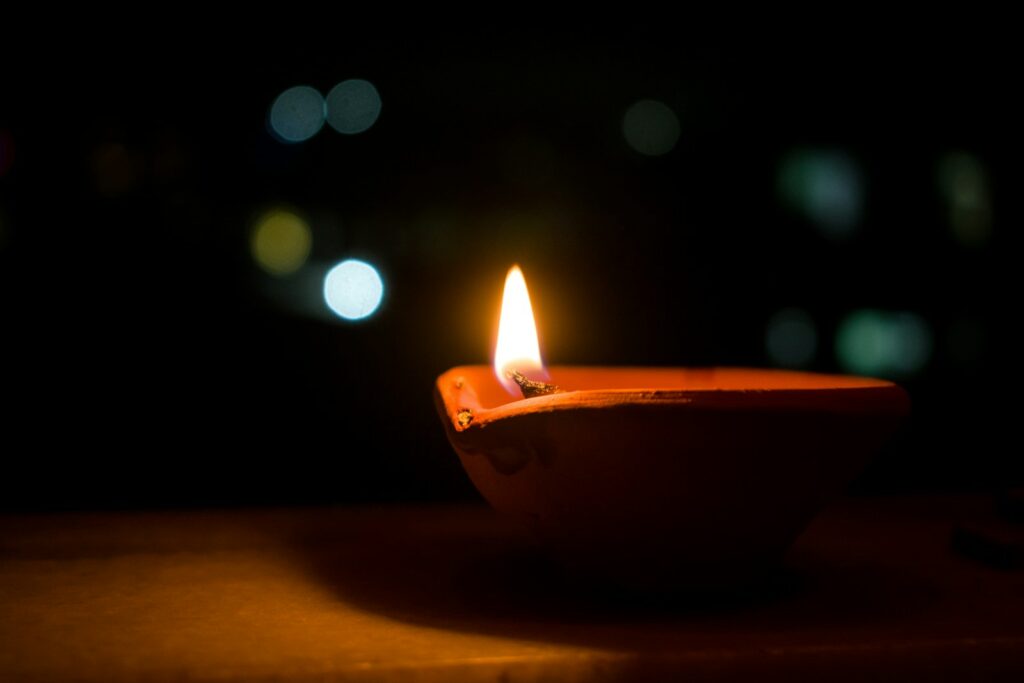Attending a Hindu funeral can be a deeply spiritual experience. The customs and rituals are focused on honoring the deceased and helping their soul move forward. Here’s a breakdown of what to expect and how to prepare, including attire recommendations and advice for Westerners who may be unfamiliar with Hindu funeral customs.
What to Expect
- Ceremony Location: Hindu funerals are often held at a family home, a funeral home, or a crematorium. The ceremony typically lasts for a few hours and is led by a Hindu priest or elder family member.
- Rituals: Rituals may include chanting from sacred texts like the Bhagavad Gita, prayers for the deceased’s soul, and offerings of flowers, rice, or other sacred items. Family members might circle the body in a clockwise direction or light candles near it as part of the farewell.
- Cremation: Hindu funerals often involve cremation, as it’s believed to help release the soul from the body. The body is usually dressed in simple clothes and placed in a coffin. After the main ceremony, cremation takes place, which is typically a private affair for close family members.
- Mood: The atmosphere at a Hindu funeral is generally solemn but centered on spiritual liberation rather than overwhelming sadness. It is respectful to remain quiet and focused on the proceedings.
- Post-Funeral: After the cremation, the family usually observes a mourning period of 13 days. This is a time for reflection, prayers, and remembrance. In some cases, guests may be invited for meals or memorial services during this time.
What to Wear to a Hindu Funeral
General Guidelines:
- Modest and Respectful: Hindu funeral attire is simple and conservative. Guests should dress modestly and avoid bright or flashy colors. White is the traditional color of mourning.
- Avoid Black: While black is often worn at Western funerals, it is not appropriate for a Hindu funeral. White or light-colored clothing is much more suitable.
Men’s Attire
- White Shirt and Pants: Men typically wear white or light-colored shirts with simple pants. Cotton or linen fabrics are common, especially in warmer climates.
- Traditional Attire (Optional): If you’re familiar with Indian attire, a white kurta (long shirt) and dhoti or pajama-style trousers are suitable. However, Western-style clothing is acceptable as long as it follows the modesty guidelines.
- Shoes: Be prepared to remove your shoes before entering the ceremonial area. Choose footwear that is easy to slip on and off.
Women’s Attire
- Saris or Modest Dresses: Women often wear white saris or other traditional attire like a salwar kameez (a tunic and trousers). If you’re not accustomed to wearing traditional garments, a simple, modest white dress or blouse with a skirt or pants will be fine.
- Minimal Jewelry: It’s important to keep accessories simple. Avoid flashy or heavy jewelry out of respect for the solemn occasion.
- Head Covering: In some regions, women may cover their heads with a scarf or part of the sari as a sign of respect, though this is not always required.
Attire for Children
- White or Light-Colored Clothing: Children should also wear white or light-colored clothing, such as a plain shirt and trousers or a modest dress. Keep it comfortable, as funerals can be lengthy.
Advice for Those Are Unfamiliar with Hindu Customs
Here are some tips to help you better understand Hindi customs.
- Cultural Sensitivity: If you’re new to Hindu customs, follow the lead of the family or other attendees. It’s okay to observe rather than participate in unfamiliar rituals if you’re unsure.
- Participation: While guests aren’t usually required to actively participate in rituals, standing respectfully, offering flowers, or joining in prayers may be welcomed. Don’t be afraid to ask a family member what’s appropriate.
- Greeting the Family: After the ceremony, it’s common to offer condolences to the family. A simple bow or folded hands (Namaste) with a kind word is appreciated. Some families may prefer not to shake hands or hug, so follow others for guidance.
- Avoiding Food or Drinks: Unlike Western funerals where refreshments may be offered, it’s not typical at a Hindu funeral. If food is served later during a mourning period, it will likely be vegetarian.
- Maintaining Silence: Hindu funerals are solemn occasions, and it’s respectful to remain quiet and composed during the ceremonies. Mobile phones should be turned off or kept on silent.
- Removing Shoes: Shoes are typically removed before entering a prayer hall, family home, or ceremonial area. Check for a designated area to leave your shoes.
- Body Language: Avoid pointing the feet toward the deceased or religious objects, as feet are considered impure in Hinduism.
- Flowers: White flowers are often used as offerings. If you wish to bring flowers, ensure they are white or light-colored, as these represent peace and purity.
A time for spiritual reflection
A Hindu funeral is a time for spiritual reflection and honoring the deceased. Dressing respectfully in white or light-colored clothing, following the family’s lead in customs, and maintaining a solemn demeanor are key to showing respect. Western guests should feel comfortable observing and participating as appropriate, with an emphasis on humility and cultural sensitivity.

